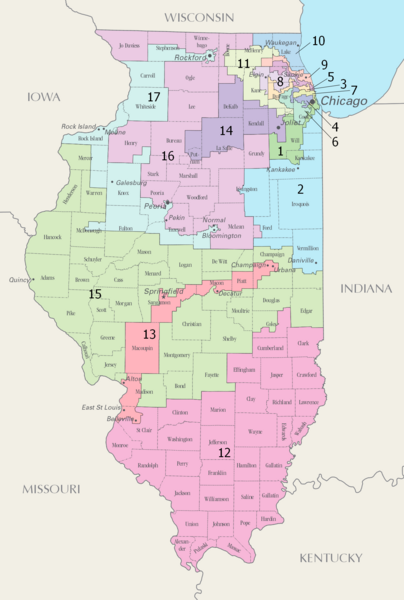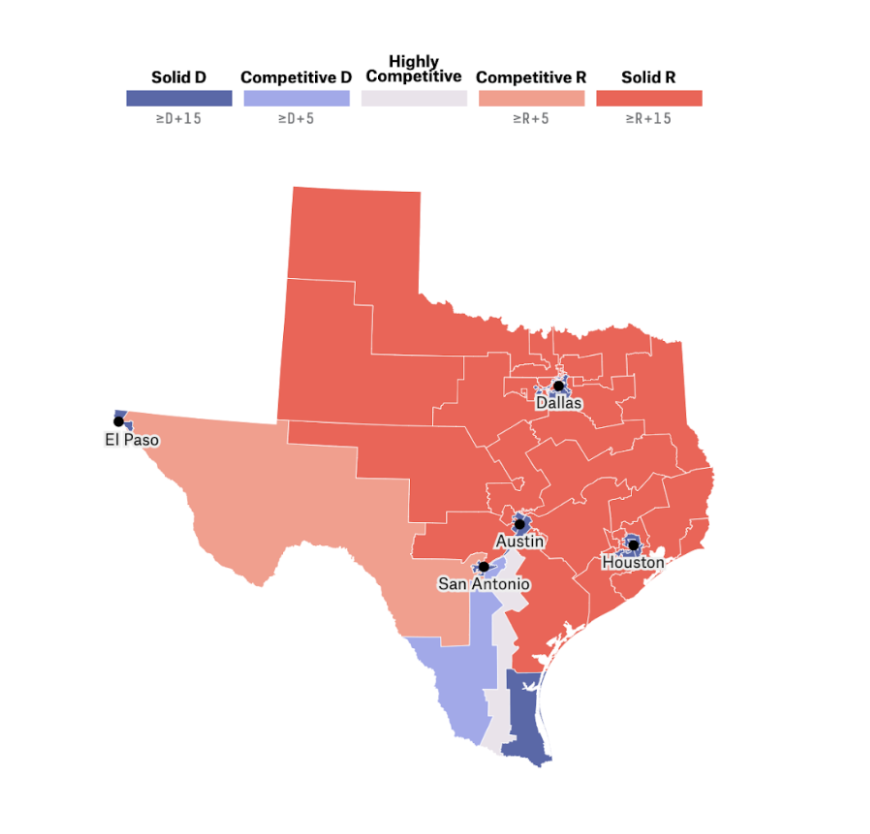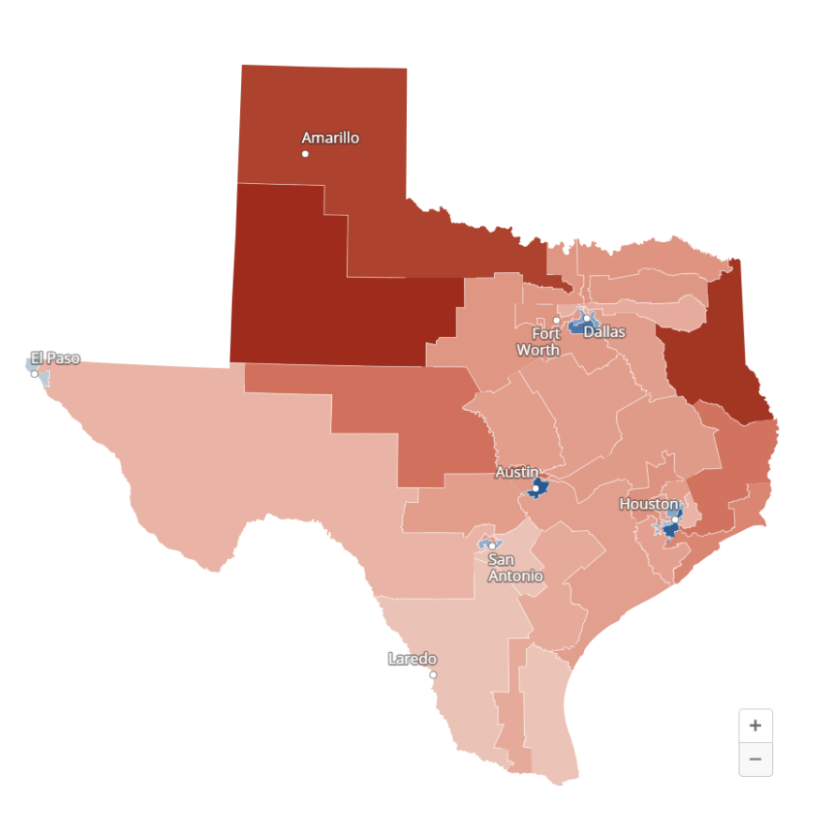.png)
Image - Clark Van Der Beken
In June, the NYT reported that Trump had urged Republican leaders across the country to redistrict their congressional maps to further benefit Republicans. Trump’s disapproval and the historical backlash to the incumbent party means that the Republican party will likely lose their majority in the House of Representatives in the coming midterm elections next year, especially with their slim majority now. The main target: Texas. On the 9th of July, Republican governor of Texas Greg Abbott called a special session of the Texas legislature to discuss redistricting. On the 30th of July, Texas Republicans published their proposed map, which aims to give them up to 30 of the 38 congressional districts in the state (79% of seats), even though Trump won just 56% of the vote in Texas in 2024. This is also known as gerrymandering.
Gerrymandering is a process intended to maximise a party’s representation by drawing seat boundaries in their favour. This is done by two methods concurrently: cracking (splitting areas that vote heavily for one party into separate districts in an attempt to dilute their vote) and packing (grouping areas that vote heavily for one party into ‘packed’ districts that reduce the efficacy of their vote). An example of packing in the UK (assuming Labour had control over redistricting) would be if Green wards in Bristol were packed into one district to prevent the other Bristol districts from going Green and staying Labour. An example of cracking would be if Chelsea, Kensington, the City of London and Westminster were cracked into several districts to prevent the Tories from winning those seats.
Gerrymandering in America is a process that has existed since the early 1800s. Unlike the UK, the US does not have an independent redistricting commission like the BCE. Instead, individual states have the power to redistrict their own seats. Generally, states are obliged to redraw their seats according to the census results at the beginning of each decade. Some states have independent commissions that draw their districts (e.g. Michigan, California, Washington), while others have their state legislatures draw them. If state government is split (usually the parties of the governor, State Senate and State House), parties are likely to reach a compromise resulting in fair-ish maps. If a party has whole control over a state government and has the power to redistrict, gerrymandered maps tend to follow (e.g. Illinois for Democrats and Texas and Florida for Republicans). For example, the map in Illinois looks like this.

If we look at partisan control, we can see that Democrats have cracked suburban Republicans in Chicago by drawing Republican-leaning suburbs and exurbs into strongly Democrat Chicago. On the other hand, Democrats have also packed rural Republicans into 3 districts: the 16th, the 15th, and the 12th. This has resulted in Democrats winning 14 of the 17 seats (82%) despite only winning 54% of the vote in 2024.

Conversely, in Texas, the current map looks like this. We can see that Republicans have cracked Democrat votes in all of Dallas, Houston and the San Antonio-Austin corridor, while packing Democrat voters in inner cities (e.g. Black and Hispanic voters in Houston, Dallas, and liberal White voters in Austin). The current map has 25 Republicans and 13 Democrats (Rs have 66% of the seats despite only winning 56% of the vote in 2024). This is already a significant gerrymander.

Republicans intend to go even further this time. They intend to eliminate all 3 Democratic districts in South Texas while eliminating the Democrat district connecting San Antonio and Austin. They also intend on dismantling another Dallas seat and another Houston seat, leading to a 30-8 delegation. We can see that Republicans have drawn Republican rural areas into the cities in an effort to further dilute the Democrat urban and suburban vote.
Democrats in Texas have staged a walk-out to prevent the passage of the gerrymandered map. Texas’ constitution states that in order to conduct legislative business, 2/3rds of representatives must be present in the chamber (a quorum). The Texas State House has 150 members, of which there are 62 Democrat seats. On the 3rd of August, a majority (at least 51) of Texas Democrat House members left the state for Illinois, New York and D.C., denying the Republicans a quorum. As a result, they have not been able to open the vote to pass the new map. This is not the first time Texan Democrats have staged a walkout. In 2021, they issued a walkout in protest of a bill restricting voting rights. In the end, they returned and Republicans passed the bill anyway.
As a result, Greg Abbott has begun to look into legal options to compel the members to return. The issue is their jurisdiction is confined to Texas as the compulsion is under state law. It seems that Texas Democrats will try to hold out as long as possible to avoid the passage of the maps. For the maps to be implemented, lawmakers will have to hold out until December. Until then, legislators face a fine of $500 a day for every day they are absent.
In retaliation, governor Gavin Newsom of California has proposed disbanding the state’s Independent Redistricting Commission in favour of gerrymandering the state’s districts. Currently a 43D-9R delegation (Democrats won 83% of seats compared to winning 59% of the vote in 2024), Newsom intends to gerrymander the state to a 48D-4R delegation, reversing the gains made in Texas. However, this requires the passage of a ballot proposition (voters have to approve it). Polling shows a narrow majority supporting the proposition, but if Democrat lawmakers frame it in a way depicting Trump and Republicans as the antagonist, the proposition has potential to pass. In order for it to qualify for this year’s ballot to allow the map to be in use for next year’s elections, the proposition proposal has to be released by the 22nd of August.
Ohio also intends to gerrymander its districts further in favour of Republicans. Currently, a Republican drawn map of 10R-5D is in place (Republicans won 67% of seats while only winning 55% of the vote in 2024). They intend to push the map to elect a 12R-3D delegation. Furthermore, Republican controlled states like Kentucky, Missouri and Indiana intend to eliminate one Democrat seat each in the respective cities of Louisville, Kansas CIty, and Gary. These all seem likely to pass.
New York governor Kathy Hochul has also suggested eliminating the state’s Independent Redistricting Commission but this seems unlikely to pass as Democrats lack the supermajority in the state legislature to amend the system.
This tit-for-tat gerrymandering war between the Democrats and Republicans ahead of next years elections seem unlikely to end. Unless Congress itself can pass a bill outlawing gerrymandering, delegations are unlikely to be able to represent their communities properly as their districts themselves represent parties instead of local communities, defeating the entire purpose of districts. If things go as they seem they do, Republicans will come out on top as they control more states without Independent Redistricting Commissions, and Democrats will face an uphill battle to regain the House to fight Trump’s Republican agenda.